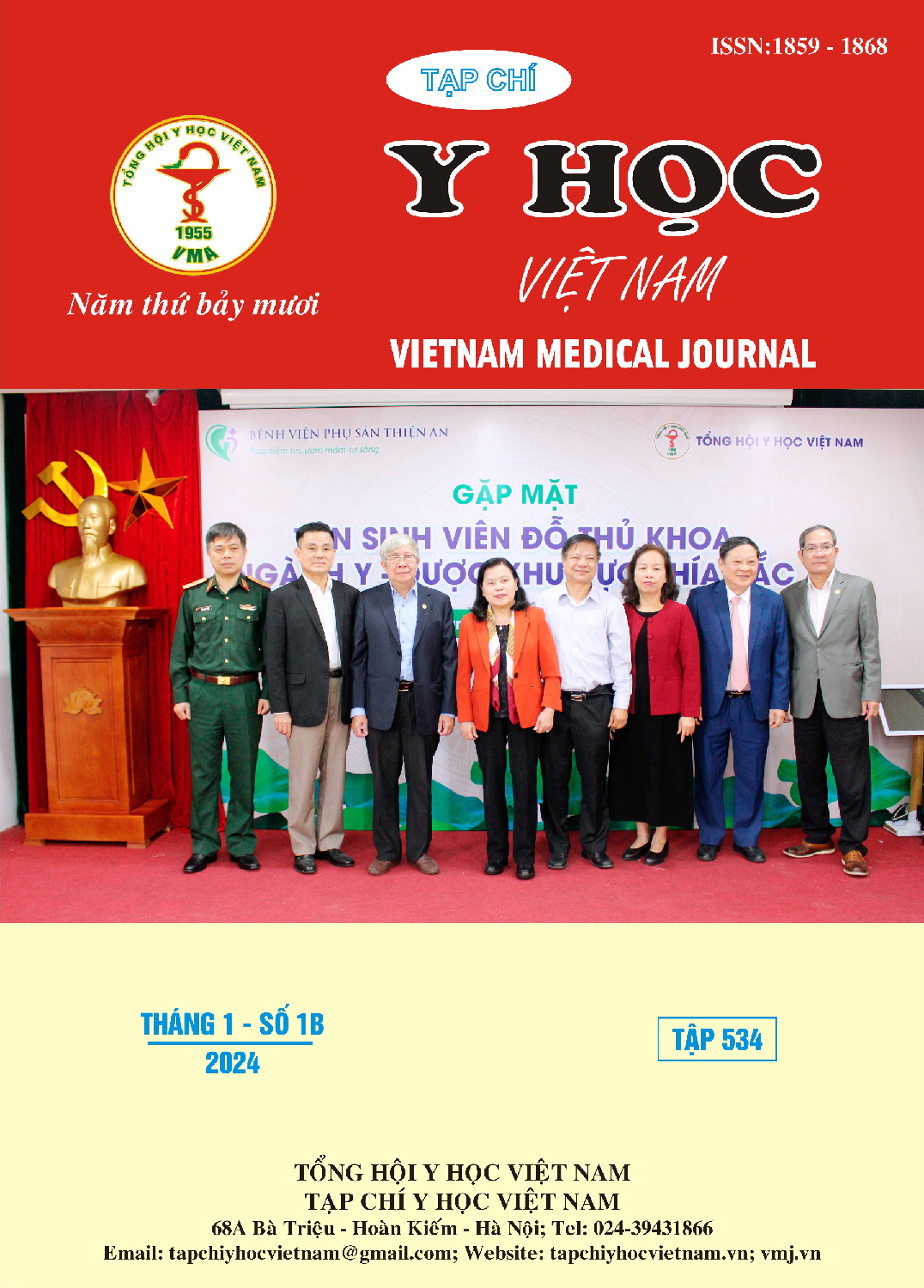NUTRITIONAL STATUS AND SOME DEMOGRAPHIC FACTORS OF PRESCHOOL CHILDEN IN HANOI
Main Article Content
Abstract
Objective: The study aims to assess the nutritional status and demographic factors of preschool children in Hanoi. Research methods: A cross-sectional descriptive study was conducted on 14,720 preschool children in Hoan Kiem district, Hoang Mai district, and Dong Anh district in 2020. Results: Study on 14.720 preschool children showed that, the age group from 48-59.9 months accounted for nearly 42%, although in the preschool age group, the number of children over 60 months old still constituted approximately 20%. The total number of male children was more than 5.5% compared to female children (52.76 versus 47.24). When considering the Z-score for weight/height (for children under 5 years old) and BMI/age (for all children), the majority of children had a normal nutritional status. Overall, in all three districts, overweight children (1102 children, accounting for 7.5% of total children) outnumbered obese children (679 children, accounting for 4.6% of total children). The age group from 60 to 72 months had the highest prevalence of overweight and obesity, with rates of 16.0% and 12.5%, respectively. Children aged 48-59.9 months had a 1.62 times higher risk of overweight and obesity compared to children aged 24-35.9 months. Particularly, children over 60 months had a 5.95 times higher risk than children aged 2-3 years. Male children had a 1.69 times higher risk than female children (95% CI: 1.53-1.88). Children in Hoang Mai district had a 1.63 times higher risk, and children in Hoan Kiem district had a 2.09 times higher risk compared to children in Dong Anh district (p<0.01). Conclusions: The prevalence of overweight and obesity, as measured by BMI Z-score, in all 14,720 preschool children in Hanoi is relatively high (12.16%). The prevalence of overweight and obesity, as measured by weight/height Z-score, in 11,855 children under 60 months in Hanoi is 7.67%.
Article Details
References
2. Kelly T, Yang W, Chen CS, Reynolds K, He J. Global burden of obesity in 2005 and projections to 2030. Int J Obes (Lond). 2008/09//undefined 2008;32(9): 1431-7. doi:10.1038/ijo.2008.10210. 1038/ijo.2008.102.
3. Gill T. Epidemiology and health impact of obesity: an Asia Pacific perspective. Asia Pac J Clin Nutr. 2006 2006;15 Suppl:3-14.
4. Nguyễn Quang D, Nguyễn L. Tình trạng béo phì ở học sinh tiểu học 9-11 tuổi và các yếu tố liên quan tại Hà Nội và thành phố Hồ Chí Minh. Tạp chí Dinh dưỡng và thực phẩm. 2008 2008;4(1):39047.
5. World Health Organization. WHO Multicentre Growth Reference Study Group. WHO Child Growth Standards: Length/height-for-age, weight-for-age, weight-for-length, weight-for-height and body mass index-for-age: Methods and development. https://www.who.int/childgrowth/ standards/technical_report/en/
6. Lê Thị Tuyết, Nguyễn Thị Trung Thu, Ngô Thị Thu H, Nguyễn Thị Lan Hương, Lê Thị Thuỳ Dung, Đỗ Nam Khánh. Gánh nặng kép dinh dưỡng và ảnh hưởng của thói quen ăn uống đến tình trạng dinh dưỡng ở trẻ mầm non xã Nam Hồng, Đông Anh, Hà Nội, năm 2018. Tạp chí Khoa học ĐHQGHN: Khoa học Y Dược. 2019 2019;35(2):68-77.
7. Nguyễn Thị Trung Thu, Lê Thị Tuyết. Đặc điểm nhân trắc và tình trạng dinh dưỡng của trẻ từ 24 đến 59 tháng tuổi ở Hà Nội, Thanh Hóa, Phú Thọ năm 2018. Tạp chí Khoa học - Đại học Sư phạm Hà Nội. 2018;3:150-157.
8. UNICEF. Malnutrition prevalence remains alarming: stunting is declining too slowly while wasting still impacts the lives of far too many young children. Accessed 5/2020, https://data. unicef.org/topic/nutrition/malnutrition/


